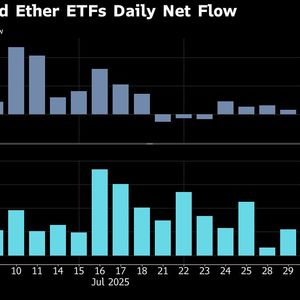Latest News
-
 Vitalik Buterin Sets Ethereum’s Unyielding Pace
Vitalik Buterin Sets Ethereum’s Unyielding PaceCoinTurk News 2025-08-01 14:42
-
 Link Between Ripple (XRP) and BlackRock Unveiled
Link Between Ripple (XRP) and BlackRock UnveiledTimesTabloid 2025-08-01 14:40
-
 OneFootball launches Community Sale on CoinList - Now LIVE!
OneFootball launches Community Sale on CoinList - Now LIVE!Crypto Daily 2025-08-01 14:28









